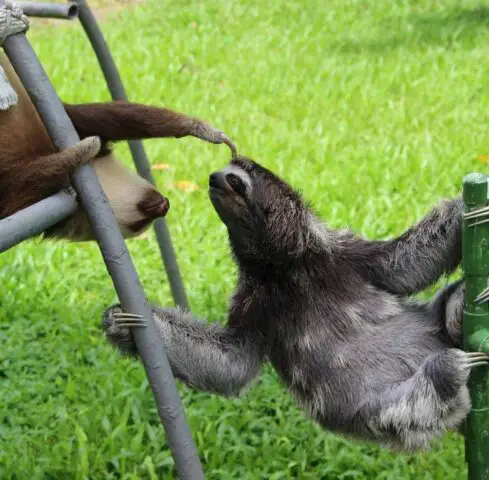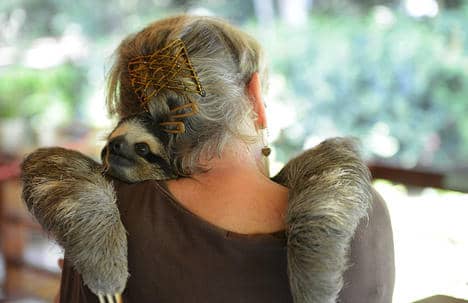With a very slow rhythm as if the day had no end and always hanging upside down from the branches they move through the jungles of Costa Rica. We are talking about the endearing sloth whose existence is increasingly threatened by the advances of human settlements. In our country there is a shelter that collects, cares and protects them.
Some arrive here after being run over, others after being attacked by dogs or electrocuted by electrical wires. Our appointment today is face to face with these animals and especially with the Sloth Sanctuary: a refuge for sloths in Costa Rica. There we will talk with Judy Avey.
Human sensitivity sets an important precedent within this mission
Avey, although she was born in Alaska, United States, became a Costa Rican citizen in 1973, her big heart has taken to this space in Cahuita for 30 years, a small town on the Caribbean Sea that borders Panama. The organization she represents is a sanctuary that belongs to her family and that houses hundreds of these animals as guests, each with its own destiny.

It all started with Buttercup, Judy says, it was rescued by a friend while traveling down a road. There she realized that there was a dead sloth but it was a few meters away that she fell silent as to what was there, a baby sloth who was still alive and being defenseless, decided to carry it with her to provide shelter and protection.
After this, not knowing what to do, the friend knowing the great sensitivity that Mrs. Judy feels for the animals, and that she had already rescued dogs and birds, did not hesitate to ask her for help in this case. It was there that Judy decided to stay with the animal out of common sense and help until it could defend itself.
Costa Rica, a blessed land
In 1986 Judy and her Costa Rican husband named Luis decided to leave behind their past life in Alaska and start a new life in Costa Rica. In love with Tico ecology and biodiversity, they decided to buy 93 hectares of land that they earmarked for nature conservation.

In their shelter, they housed dogs, cats, birds and all the animals that needed a helping hand, which they accepted in order to care for and protect. Today, 33 years later, hundreds of two-and three-toed sloths come to this sanctuary.
A deed that has a lot to give
Judy is emphatic in saying that they will continue to dedicate themselves to this work and today their life revolves around being able to help, provide food and preserve the lives of these beautiful species that have become part of their family.
The final recommendation revolves around the education of society so that it can be learned that these animals must live in freedom since they are not designed to live in captivity and less be adapted to be a pet or companion animal.
Every sloth counts
And although the work that Judy does is criticized by some conservationists because some of the species that enter there generally must live and spend the rest of their days in this sanctuary, Judy remains firm in this work and tells all those detractors that for her organization every sloth counts.

